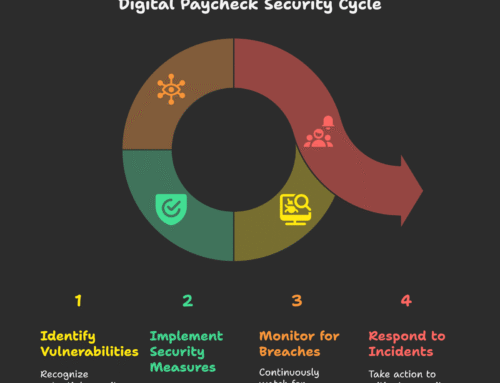It’s been tiring for all of us to remain positive(no pun intended) despite the innumerable challenges Covid has thrown at us. It has also impacted several businesses, and no, we are not talking about multiple lockdowns or weekend curfews. But how it impacted the day-to-day productivity of employees.
Earlier, there were biometrics or timestamps to maintain employee attendance records, but that’s no longer an option considering WFH. With little to no visibility in the employee’s day-to-day activities, it has become challenging to monitor employees’ performance. This is where technology comes into play.
Teaching old dogs new tricks!
The way we used to track employee productivity might still be in place, but is it really effective? All the more when there has been a massive transition in how we used to work. With WFH being the talk of the town, it’s essential to consider several factors contributing to efficiency and productivity.
So what exactly are employee productivity metrics?
Measuring employee performance is an essential component of determining the health of your firm. Because your people are your most valuable asset, you must ensure that everyone reaches their full potential by providing the necessary support and opportunity. Key performance indicators (KPIs) provide measurements needed for teams to track their success.
- Utilization rate = (Total weekly billable hours logged/total weekly hours logged) x 100
This KPI displays the proportion of directly lucrative work to internal costs that each employee performs. To price and schedule work competitively, one must assess how much time your team spends on non-billable time.
- Average task completion rate = Total time to complete the same task (across set timeframe)/the number of times performed.
Using this as a rough reference to determine your team’s overall efficiency. It’s essential for figuring out how different long phases of a project take your staff on average so you can enhance budget predictions and resource management.
- Employee capacity = weekly capacity – total hours logged.
Employee capacity indicates who is near burnout and who has room to take on a little more work, similar to overtime. It’s pretty useful for evenly allocating work across your team and determining who requires further supervision.
Other KPIs to measure employee productivity include:
- Voluntary Attrition or Employee Turnover Rate
- Keep Smart (Learning and Employee Retention)
- Employee Net Promoter Score (NPS)
- Customer Retention
- Total Number of Customer Interactions
- Customer Service Quality
- Customer Satisfaction (C-SAT)
- Average handle time (AHT)

Business photo created by freepik – www.freepik.com
5 Ways to boost employee productivity
Employee productivity, often known as workplace productivity or workplace output, measures a single employee’s production.
A company that makes artistic bottles, for example, might wish to know how many creative bottles one person can make. This is the individual employee’s output in a certain amount of time.
Employee productivity should not be confused with labor productivity (workforce productivity), which refers to a country’s or company’s overall economic output per labor hour.
#1 Monitoring Attendance
Employee attendance tracking software helps you track how many hours each employee works and what tasks they perform during that time. This allows one to track each employee’s productivity and identify areas for improvement, resulting in increased team efficiency.
Furthermore, an employee attendance system eliminates any doubt regarding how many hours an employee works. This not only allows you to hold them accountable for any mistakes, but it also allows you to pay employees on time and accurately.
Tracking attendance also keeps track of sick days taken, making the process of authorizing planned vacations easier. If employees don’t have to worry about taking time off, they are more likely to be pleased and motivated.
#2 Project Time Tracking
Employees log the time they work each day in a paper or Excel timesheet with manual timesheets. This procedure, however, is both time-consuming and error-prone.
Time monitoring software is a more efficient and accurate way to manage project time.
Employees must begin recording their time when they start working with the software. Manual options with a start/stop button are offered in most time monitoring software. However, an automatic time tracker can be used. This offers more detailed insights into employee productivity and better management of time/resources.
#3 Easy access to organizational information
In a nutshell, a knowledge base system is essential to establish bridges wherever communication gaps exist to minimize leakage and halt. It links employees, clients, authorities, knowledge databases, procedures, operations, and technology to foster collaboration and produce high-quality solutions.
Having a single source of information across the entire workforce maintains consistency and helps with having correct information.
Several alternatives are available for AI-powered knowledge management systems like Knowmax, Upland, Mindtouch, etc.
#4 AI-Powered Training
With technology advancing rapidly, why should there be no change in the way new employees train? On average, it takes around 2-3 months of On Job training for a fresher to work at the same efficiency level as another employee.
Having an AI-powered decision tree for contact centers not only helps a new agent work at the same level as an experienced employee, right at the moment when he joins the company. But also, it maintains the authenticity of the information. All they need to do is identify the best option that meets their needs, and the decision trees assist them in reaching the right decision. Since the information is fetched from a centralized database, there is a single source of information, thus maintaining its authenticity.
Various alternatives provide AI-enabled functionality like Knowmax, USU, etc.
#5 Incentives to boost employee productivity
Apart from the ways mentioned above, it is vital to keep your employees happy because happy employees are productive employees. Offering incentives depending on their achievements is a great approach to cheer them up.
Workers receive a colossal incentive when they participate in management. Workers’ participation in management allows for two-way communication, which gives them psychological gratification that their voice is being heard.
A suggestion system is an incentive that meets many of the needs of employees. Many organizations that use the recommendation system reward valuable suggestions with monetary incentives. They may occasionally publish the employee’s name along with a photograph in the company’s magazine. This encourages employees to look for something that will be more beneficial to the company.
Another incentive is the possibility of advancement. Workers are more satisfied and devoted to the organization’s goals if they have opportunities for promotion and growth as well as to develop their personalities.
Benefits of boosting employee productivity
Employee productivity is a significant concern for organizations because it determines how successful a company is. Productivity contributes to the strengthening of client relationships. If productivity improves, customers will be much happier with the response time and overall efficiency. Customer satisfaction is an essential aspect of every successful organization.
Unproductive personnel feel discouraged and alienated, which has a negative impact on the company’s culture and workforce. Increased employee engagement is one of the most significant factors of workplace productivity. More productive employees are more likely to participate in organizational activities and build strong bonds with their coworkers.
They are less prone to do so. They are less likely to get frustrated and burned out. This will result in a positive feedback loop that benefits both the employee and the company.
Productivity has an impact on business costs as well. Employees will have more time to devote to other projects or tasks if they accomplish duties on time. As a result, productivity rises, resulting in cost savings.
There is no doubt that if people are productive and dedicated to their jobs, the quality and quantity of work will improve. The organization will attain higher production and more targets. Now that we know how critical it is to maintain employee or agent productivity, let’s put on our thinking hats and see how we can implement them.





Leave A Comment